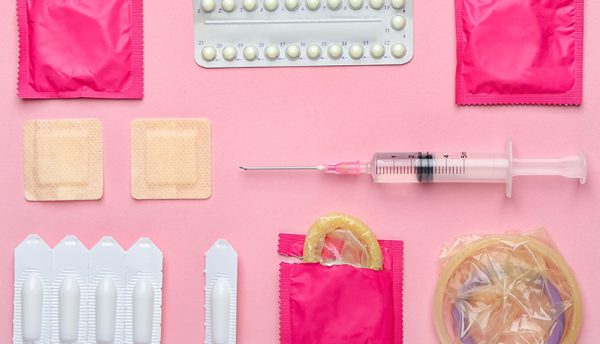In this article, Dr Robert Sackin and Roberta Sher, Partner and Assistant at intellectual property law firm Reddie & Grose, provide a brief overview of some current innovations in the non-invasive and non-hormonal, wearable and male contraceptive spaces.
The introduction of the contraceptive pill in 1960 gave women economic freedom, sexual liberation and unprecedented autonomy over their bodies. However, over 60 years after this milestone and given the adverse side effects of hormonal contraception, there is a considerable way to go to improve methods of contraception.

The pitfalls of the pill are well documented; use of hormonal contraceptives increases a woman’s rate of taking antidepressants by 22-25% (80-120% for teenagers), increases female suicide rates by 308% and increases the risk of developing breast cancer by 9% to 38% depending on length of use.
A heightened awareness of these risks, coupled with numerous other side effects (migraines, vaginal infections and mood swings to name but a few) is driving women away from hormonal contraceptives. Worryingly, we lack similarly effective, convenient and non-invasive alternatives.
The above analysis reveals an exciting opportunity for innovators to provide non-hormonal contraceptive technologies and disrupt the contraceptive market. Last year, the UNFPA reported that, ‘nearly half of all pregnancies, totalling 121 million each year worldwide, are unintended’. There is clearly a captive audience and a demand for technologies that provide efficacy comparable to hormonal contraceptives without the hormone-related side effects.
Although investment within the women’s HealthTech sector has been slow, the last few years have witnessed considerable growth. As a result of this, the significant opportunities for innovation mentioned above have led to a development boom within contraceptive technology. In such a competitive market driven principally by technological innovation, filing patent applications is of paramount importance to protect inventions from being commercially exploited. This is particularly the case for startups, where one idea or product often forms the core of the business. Having a granted patent, especially in major markets such as Europe and the US, can also be attractive to potential investors.
Cervical mucus engineering – Cirqle Biomedical

Cirqle Biomedical is a Danish startup pioneering cervical mucus engineering as an alternative to hormonal birth control.
Since one of the roles of cervical mucus is to prevent infection, it is impenetrable to foreign cells, including sperm cells, throughout the month. However, around ovulation, hormonal changes trigger a loosening of the mucus, allowing sperm to pass through the cervix and fertilise an egg.
Cirqle have discovered small biopolymers that can alter the microstructure of cervical mucus to make it temporarily impenetrable to sperm, preventing fertilisation. These mucoadhesive polymers were shown to be a 100% effective barrier in efficacy trials in large animals. This was the first demonstration of a novel mechanism of action in female contraception in 60 years.
Cirqle Biomedical have three PCT applications with filings in major jurisdictions worldwide.
Beyond contraception, Cirqle believe that many unmet needs in women’s health could be addressed with a mucus engineering approach. These include infertility, vaginal infections and sexually transmitted diseases.
On-demand contraceptive gel – Evofem Biosciences
Evofem Biosciences is a biotechnology company providing over-the-counter products in the feminine health and hygiene space. They have a particular focus on sexually transmitted infections and contraception.
Evofem Biosciences’ main contraceptive product, Phexxi, is a gel which works by maintaining an acidic vaginal pH to decrease sperm motility and prevent pregnancy. It is an on-demand method of contraception, so can be used only when needed.
Vaginal pH levels normally vary between 3.5 and 4.5. The entry of sperm raises the pH, allowing sperm to travel to the uterus. Application of a vaginal pH modulator such as Phexxi, whose active ingredients are lactic acid, citric acid and potassium bitartrate, keeps vaginal pH within the range of 3.5 and 4.5, hindering sperm motility and reducing the chance of fertilisation.
Evofem Biosciences have several granted patents and pending patent applications about acid-buffering contraceptive compositions, their manufacture and an application device. They also have patents and pending patent applications about antimicrobial compositions for the prevention and treatment of bacterial vaginosis (BV) and sexually transmitted infections such as HPV.
Wearable fertility tracker – Natural Cycles and Oura
The Natural Cycles app was the first direct-to-consumer birth control app to be approved by the FDA in 2018. It makes use of the subtle increases in body temperature occurring around ovulation to calculate the days each month where a woman might be fertile.
Previously, the app relied on its users manually measuring and recording their body temperature every day. Of course, it also relied on the user abstaining from sex or using protection on potential ovulation days.
However, Natural Cycles have recently eliminated one of these factors by partnering with smart ring manufacturer Oura Health to use their Oura Ring wearable. The Oura Ring collects nightly temperature data from the user and integrates it into the Natural Cycles app. Natural Cycles is both FDA-approved and CE marked as a medical device and clinical studies have shown it to be 93% effective as a contraception method when used normally. This is similar to the pill, but slightly less effective than an intrauterine device.
Oura Health have a large patent portfolio with claims towards devices, systems and methods for measuring and calibrating body temperature, as well as methods of predicting fertility from wearable-based physiological data.
The male pill
The market value of a new male contraceptive agent could be up to US$200 billion, according to a study published in Current Obstetrics and Gynaecology Reports. Clearly, the male contraceptive space is ripe for innovation.
Involving men in the use of birth control would allow contraceptive responsibility to be shared, reducing the pressure on women to bear the financial and health-related burdens that typically come with contraception. This is particularly the case where health reasons prevent certain women from using hormonal contraceptives.
Manufacturer YourChoice Therapeutics began its Phase I clinical trial of new non-hormonal male birth control pill YCT-529 in December 2023. This pill works by inhibiting a protein called retinoic acid receptor alpha (RAR-α), which blocks the effects of vitamin A that plays important roles in the growth and differentiation of sperm cells. When tested in preclinical trials in male mice, the pill resulted in sterilisation that was 99% effective. Promisingly, the effects were reversible; after stopping the pill, the mice were fertile again after four to six weeks.
Summary
The social discourse around female health is changing. This is owed in part to the normalisation of conversations surrounding female health and wellbeing, as well as responses to abortion laws in the wake of the Roe vs Wade case. Although notable efforts are being made in the contraceptive space, many novel methods are still at an early stage of research and the upshot remains that contraceptives available today are not suitable for all users. The current momentum must be maintained in order for all women with unmet needs to have access to the full range of contraceptive choices.
Start-ups can protect their core inventions through different aspects. Patent applications can be drafted towards particular devices, components, methods of production or methods of use. Having a patent portfolio covering different aspects of the central idea can add significant value and make it more difficult for competitors to operate in the same technological area. If a start-up only has one patent, a competitor could successfully challenge its validity and clear the way for their own operations or simply design around it.
Navigating the field of intellectual property can be challenging, therefore we recommend getting in touch with a specialist law firm with a wide breadth of cross-disciplinary experience in drafting and prosecuting patent applications relating to medical devices and digital healthcare related inventions.


